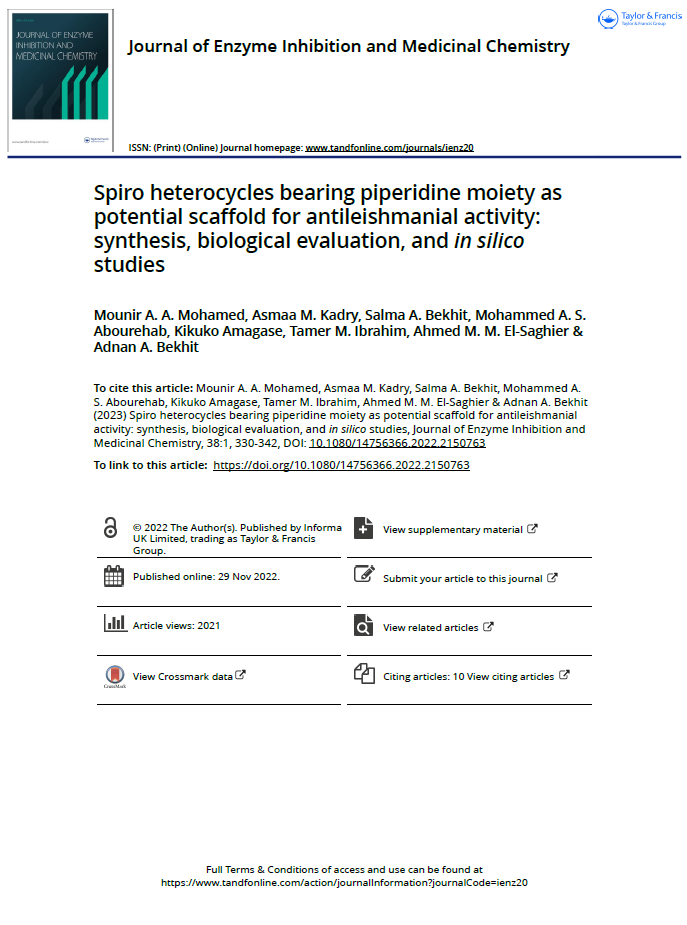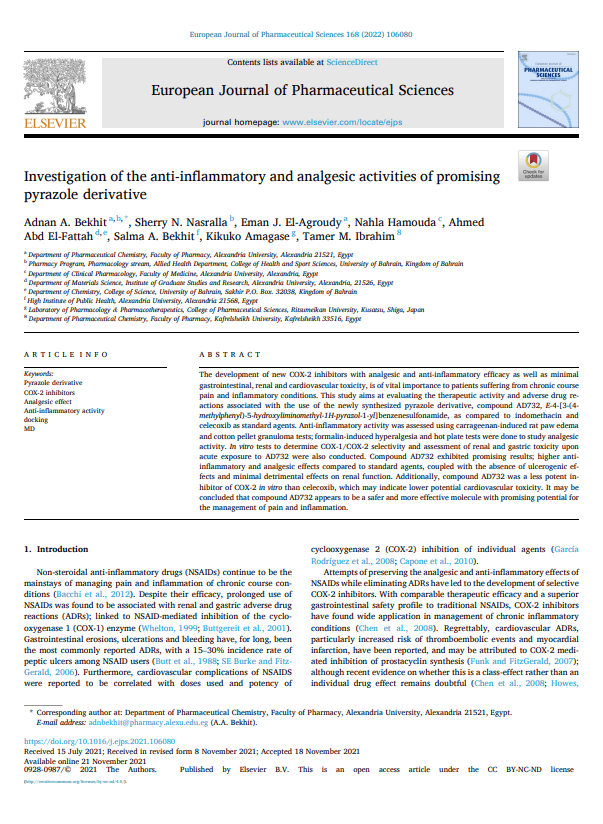Document
Modulating leishmanial pteridine metabolism machinery via some new coumarin-1,2,3-triazoles Design, synthesis and computational studies
Linked Agent
Sabt, Ahmed , Author
El-Attar, Maryam A.Z., Author
Ora, Mikko, Author
Bekhit, Alaa El-Din A., Author
Belal, Ahmed S.F., Author
Elzahhar, Perihan A., Author
Title of Periodical
European Journal of Medicinal Chemistry
Country of Publication
Kingdom of Bahrain
Place Published
Sakhir, Bahrain
Publisher
University of Bahrain
Date Issued
2023
Language
English
Subject
English Abstract
A B S T R A C T :
In accordance with WHO statistics, leishmaniasis is one of the top neglected tropical diseases, ffecting around 700 000 to one million people per year. To that end, a new series of coumarin-1,2,3-triazole hybrid compounds was designed and synthesized. All new compounds exerted higher activity than miltefosine against L. major promastigotes and amastigotes. Seven compounds showed single digit micromolar IC50 values whereas three compounds (13c, 14b and 14c) displayed submicromolar potencies. A mechanistic study to elucidate the antifolate-dependent activity of these compounds revealed that folic and folinic acids abrogated their antileishmanial effects. These compounds exhibited high safety margins in normal VERO cells, expressed as high selectivity indices. Docking simulation studies on the folate pathway enzymes pteridine reductase and DHFR-TS imparted strong theoretical support to the observed biological activities. Besides, docking experiments on human DHFR revealed minimal binding interactions thereby highlighting the selectivity of these compounds. Predicted
in silico physicochemical and pharmacokinetic parameters were adequate. In view of this, the structural characteristics of these compounds demonstrated their suitability as antileishmanial lead compounds.
Member of
Same Subject

